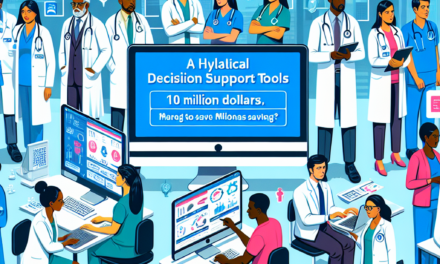Laser-Enhanced Accuracy: The Benefits of Modern Nephelometers
Nephelometers are essential instruments used to measure the concentration of suspended particles in liquids and gases. Traditionally, these devices relied on older technologies that often lacked precision and reliability. However, the advent of laser technology has revolutionized the field, leading to the development of modern nephelometers that offer enhanced accuracy and a range of benefits across various applications. This article delves into the intricacies of laser-enhanced nephelometers, exploring their technology, applications, advantages, and future prospects.
Understanding Nephelometry: The Basics
Nephelometry is a technique used to measure the scattering of light by particles suspended in a medium. The principle behind this method is relatively straightforward: when light encounters particles, it scatters in different directions. By measuring the intensity of this scattered light, one can infer the concentration and size of the particles present.
Traditional nephelometers typically used incandescent or LED light sources, which had limitations in terms of wavelength stability and intensity. These limitations often resulted in inaccuracies, especially when measuring small particles or in complex matrices. The introduction of laser technology has addressed many of these issues, leading to significant advancements in nephelometric measurements.
The Technology Behind Laser Nephelometers
Modern nephelometers utilize laser light sources, which provide several advantages over traditional light sources. The key technological advancements include:
- Monochromatic Light: Lasers emit light at a single wavelength, which enhances the precision of measurements. This monochromatic nature allows for more accurate scattering measurements, particularly in complex samples.
- High Intensity: The coherent and focused nature of laser light results in higher intensity, improving the detection of low-concentration samples.
- Directional Emission: Lasers emit light in a narrow beam, allowing for better control over the measurement environment and reducing background noise.
- Advanced Detection Systems: Modern nephelometers often incorporate sophisticated detection systems, such as photomultiplier tubes (PMTs) or avalanche photodiodes (APDs), which enhance sensitivity and response time.
- Real-Time Data Processing: Many laser nephelometers are equipped with advanced software that allows for real-time data analysis, improving the speed and efficiency of measurements.
These technological advancements have made laser nephelometers indispensable in various fields, including environmental monitoring, pharmaceuticals, and food safety.
Applications of Laser Nephelometers
The versatility of laser nephelometers allows them to be used in a wide range of applications. Some of the most notable include:
- Environmental Monitoring: Laser nephelometers are widely used to monitor air quality by measuring particulate matter (PM) concentrations. They can detect pollutants such as dust, smoke, and aerosols, providing critical data for environmental assessments.
- Pharmaceutical Industry: In pharmaceuticals, laser nephelometers are employed to analyze the size and concentration of particles in drug formulations. This is crucial for ensuring product quality and efficacy.
- Food and Beverage Industry: These instruments are used to monitor the clarity and quality of beverages, such as wine and beer, by measuring suspended particles that can affect taste and appearance.
- Clinical Diagnostics: In medical laboratories, laser nephelometers are utilized for immunoassays, where they measure the concentration of specific proteins or antibodies in biological samples.
- Industrial Applications: Industries such as oil and gas use laser nephelometers to monitor the concentration of particulates in fluids, ensuring operational efficiency and safety.
Each of these applications benefits from the enhanced accuracy and reliability provided by laser technology, making laser nephelometers a preferred choice in many sectors.
Advantages of Laser Nephelometers
The transition from traditional nephelometers to laser-enhanced models has brought about numerous advantages, including:
- Increased Sensitivity: Laser nephelometers can detect lower concentrations of particles, making them ideal for applications requiring high sensitivity.
- Improved Accuracy: The precision of laser measurements reduces the likelihood of errors, leading to more reliable data.
- Faster Measurements: The rapid response time of laser nephelometers allows for quicker data collection, which is essential in time-sensitive applications.
- Reduced Interference: The focused nature of laser light minimizes interference from background noise, enhancing measurement reliability.
- Versatile Measurement Capabilities: Laser nephelometers can be adapted for various sample types, including liquids, gases, and even solid materials.
These advantages not only improve the quality of measurements but also enhance operational efficiency in various industries.
Case Studies: Real-World Applications of Laser Nephelometers
To illustrate the impact of laser nephelometers, let’s explore some real-world case studies that highlight their effectiveness:
Case Study 1: Air Quality Monitoring in Urban Areas
In a study conducted in a major urban center, researchers utilized laser nephelometers to monitor particulate matter levels over several months. The data collected revealed significant fluctuations in PM concentrations, correlating with traffic patterns and weather conditions. The high sensitivity of the laser nephelometer allowed for the detection of fine particulate matter (PM2.5), which is known to have adverse health effects. This information was crucial for local authorities to implement air quality management strategies.
Case Study 2: Pharmaceutical Quality Control
A pharmaceutical company adopted laser nephelometry to ensure the quality of its injectable drug formulations. By measuring the size and concentration of particles in the solutions, the company was able to identify potential contamination issues early in the production process. This proactive approach not only improved product quality but also reduced waste and increased compliance with regulatory standards.
Case Study 3: Beverage Clarity Assessment
In the beverage industry, a winery implemented laser nephelometers to monitor the clarity of its wines. By measuring suspended particles during the filtration process, the winery was able to optimize its production methods, resulting in clearer wines with improved taste profiles. The ability to obtain real-time data allowed for immediate adjustments, enhancing overall product quality.
Case Study 4: Clinical Diagnostics
A hospital laboratory integrated laser nephelometry into its diagnostic processes for measuring immunoglobulin levels in patient samples. The enhanced accuracy and speed of results allowed for timely diagnosis and treatment of various conditions, improving patient outcomes. The laboratory reported a significant reduction in turnaround times for test results, which was critical in emergency situations.
Case Study 5: Industrial Fluid Monitoring
In the oil and gas sector, a company utilized laser nephelometers to monitor the concentration of particulates in drilling fluids. By maintaining optimal particle levels, the company improved drilling efficiency and reduced equipment wear. The real-time monitoring capabilities of the laser nephelometer enabled quick adjustments to fluid compositions, enhancing operational safety and performance.
The Future of Laser Nephelometry
The future of laser nephelometry looks promising, with ongoing advancements in technology and applications. Some trends to watch include:
- Miniaturization: As technology advances, we can expect smaller, portable laser nephelometers that can be used in field applications, making them accessible for on-site measurements.
- Integration with IoT: The integration of laser nephelometers with Internet of Things (IoT) technology will enable remote monitoring and data collection, enhancing real-time decision-making capabilities.
- Enhanced Data Analytics: The use of artificial intelligence and machine learning algorithms will improve data analysis, allowing for more sophisticated interpretations of nephelometric data.
- Broader Applications: As industries continue to recognize the benefits of laser nephelometry, we can expect to see its adoption in new fields, such as nanotechnology and environmental remediation.
- Sustainability Focus: With increasing emphasis on sustainability, laser nephelometers will play a crucial role in monitoring environmental pollutants and ensuring compliance with regulations.
These trends indicate that laser nephelometry will continue to evolve, providing even greater accuracy and utility in various applications.
Conclusion
Laser-enhanced nephelometers represent a significant advancement in the field of particle measurement, offering unparalleled accuracy and reliability. Their applications span a wide range of industries, from environmental monitoring to pharmaceuticals, demonstrating their versatility and importance. The technological advancements that have led to increased sensitivity, improved accuracy, and faster measurements have made these instruments indispensable tools in modern science and industry.
As we look to the future, the continued evolution of laser nephelometry promises to unlock new possibilities and applications, further enhancing our ability to measure and understand the world around us. The integration of advanced technologies such as IoT and AI will only serve to amplify the benefits of these instruments, making them even more valuable in addressing the challenges of today and tomorrow.
In summary, the benefits of modern laser nephelometers are clear: they provide enhanced accuracy, faster results, and greater versatility across various applications. As industries continue to embrace these advancements, we can expect to see significant improvements in quality control, environmental monitoring, and overall operational efficiency.





